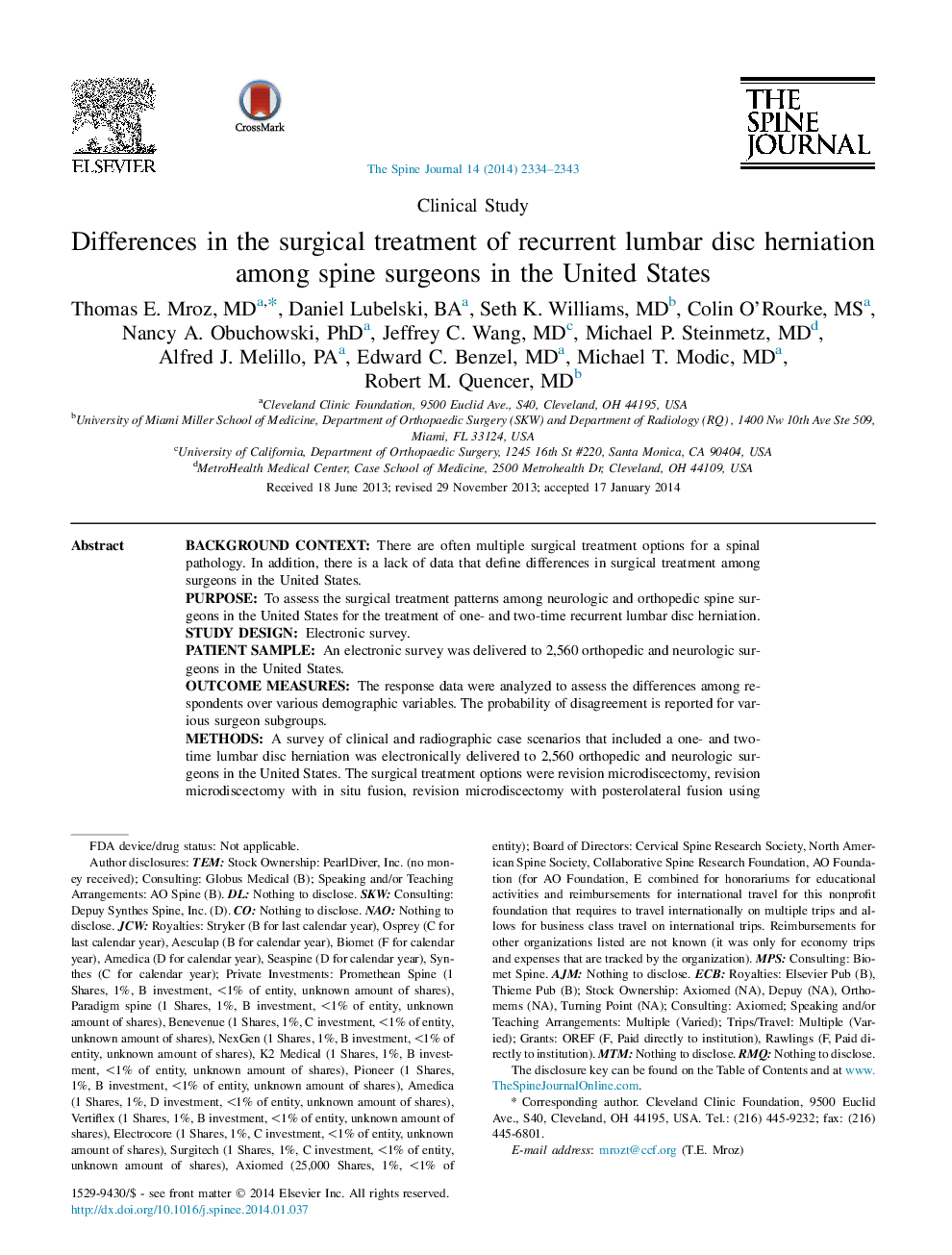| Article ID | Journal | Published Year | Pages | File Type |
|---|---|---|---|---|
| 4096745 | The Spine Journal | 2014 | 10 Pages |
Background contextThere are often multiple surgical treatment options for a spinal pathology. In addition, there is a lack of data that define differences in surgical treatment among surgeons in the United States.PurposeTo assess the surgical treatment patterns among neurologic and orthopedic spine surgeons in the United States for the treatment of one- and two-time recurrent lumbar disc herniation.Study designElectronic survey.Patient sampleAn electronic survey was delivered to 2,560 orthopedic and neurologic surgeons in the United States.Outcome measuresThe response data were analyzed to assess the differences among respondents over various demographic variables. The probability of disagreement is reported for various surgeon subgroups.MethodsA survey of clinical and radiographic case scenarios that included a one- and two-time lumbar disc herniation was electronically delivered to 2,560 orthopedic and neurologic surgeons in the United States. The surgical treatment options were revision microdiscectomy, revision microdiscectomy with in situ fusion, revision microdiscectomy with posterolateral fusion using pedicle screws, revision microdiscectomy with posterior lumbar interbody fusion/transforaminal lumbar interbody fusion (PLIF/TLIF), anterior lumbar interbody fusion (ALIF) with percutaneous screws, ALIF with open posterior instrumentation, or none of these. Significance of p=.01 was used to account for multiple comparisons.ResultsFour hundred forty-five surgeons (18%) completed the survey. Surgeons in practice for 15+ years were more likely to select revision microdiscectomy compared with surgeons with fewer years in practice who were more likely to select revision microdiscectomy with PLIF/TLIF (p<.001). Similarly, those surgeons performing 200+ surgeries per year were more likely to select revision microdiscectomy with PLIF/TLIF than those performing fewer surgeries (p=.003). No significant differences were identified for region, specialty, fellowship training, or practice type. Overall, there was a 69% and 22% probability that two randomly selected spine surgeons would disagree on the surgical treatment of two- and one-time recurrent disc herniations, respectively. This probability of disagreement was consistent over multiple variables including geographic, practice type, fellowship training, and annual case volume.ConclusionsSignificant differences exist among US spine surgeons in the surgical treatment of recurrent lumbar disc herniations. It will become increasingly important to understand the underlying reasons for these differences and to define the most cost-effective surgical strategies for these common lumbar pathologies as the United States moves closer to a value-based health-care system.
